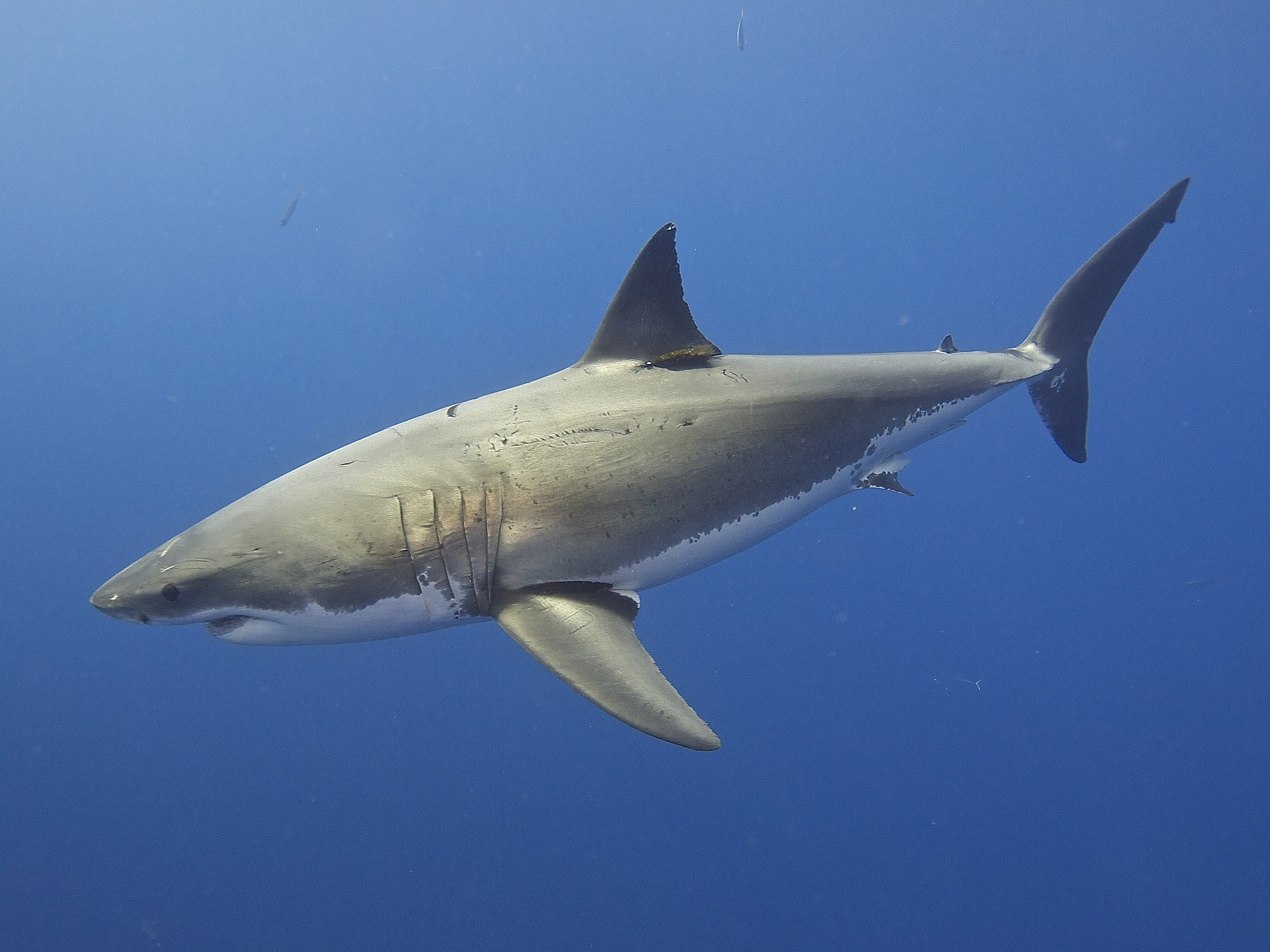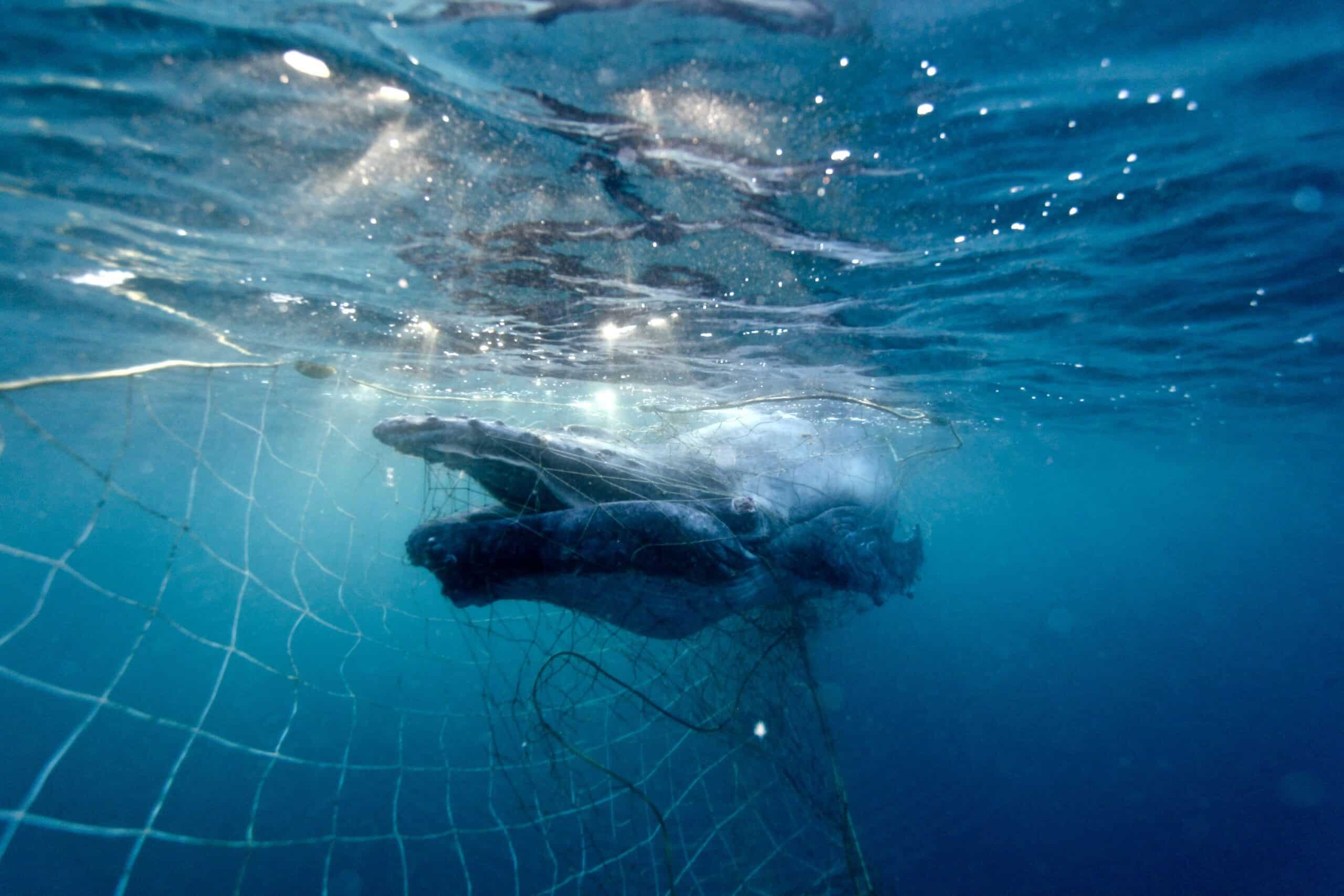Research shows that Australia’s great white sharks are highly related to each other and may consist of fewer than 500 breeding animals. SYDNEY, 24 June 2025: Latest research has found Australia’s great white shark population is much smaller than expected, increasing their vulnerability to further population threats. The population...
A new tracker will reveal the true suffering caused to marine life by the shark nets and drumlines that span Queensland’s coastline. Although touted as a way to keep swimmers safe, the reality is that nets and drumlines provide a false sense of security at a high cost to marine ecosystems. Today, Humane Society International Australia (HSI) and the Australian Marine Conservation Society (AMCS) are launching the shark culling impact tracker, which counts the mounting toll of marine animals indiscriminately caught and killed month on month in shark culling equipment.
The tracker is a live tally of whales, dolphins, turtles, rays, and sharks caught and killed by nets and drumlines in Queensland since 2001. The data is drawn directly from Queensland’s Department of Agriculture and Fisheries as it is made available to provide the public with an up-to-date picture of the appalling reality that exists just below the surface of Queensland’s ocean waters.
In 2019, the Administrative Appeals Tribunal dismissed the efficacy of the nets and drumlines deployed in the Great Barrier Reef to protect swimmers from sharks, saying shark culling had no impact on the risk of shark bite.
Now, Queensland’s Department of Agriculture and Fisheries has begun to trial non-lethal alternatives to outdated nets and drumlines that are more effective at reducing the risk of shark bite for swimmers—without adding to the mounting wildlife toll. These trials are welcome, but until non-lethal alternatives are fully implemented, HSI and AMCS will keep counting the marine wildlife that suffers and dies in the nets and drumlines until they are removed.
The shark culling impact tracker aims to shine a spotlight on these futile deaths. As of the tracker launch date, Queensland’s nets and drumlines have caught 402 whales/dolphins, 834 turtles, 1,726 rays, and 12,290 sharks since 2001. Many of the animals caught are endangered, and about half of the shark species caught pose very little risk to humans.
Lawrence Chlebeck, marine biologist for Humane Society International Australia, said: “The shark culling impact tracker is a way for us to show the nation, and the world, just how much of an impact these nets and drumlines are having on marine life in Queensland. It’s easy to put the suffering and death out of mind when it’s out of sight, so we want to show everyone exactly what it costs to keep using these ineffective shark control measures.”
Dr Leonardo Guida, shark scientist for the Australian Marine Conservation Society, said: “As the Queensland government starts to modernise beach safety by trialling the latest tech solutions like drones, eco-barriers and personal deterrents, we can hope to a drop in the rate of wildlife being caught – but not without drumlines and nets leaving the water.”
HSI and AMCS are currently running a joint initiative to end the use of lethal shark control methods in Queensland in favour of more effective non-lethal technologies. Please visit www.sharkchampions.org.au for more information.


